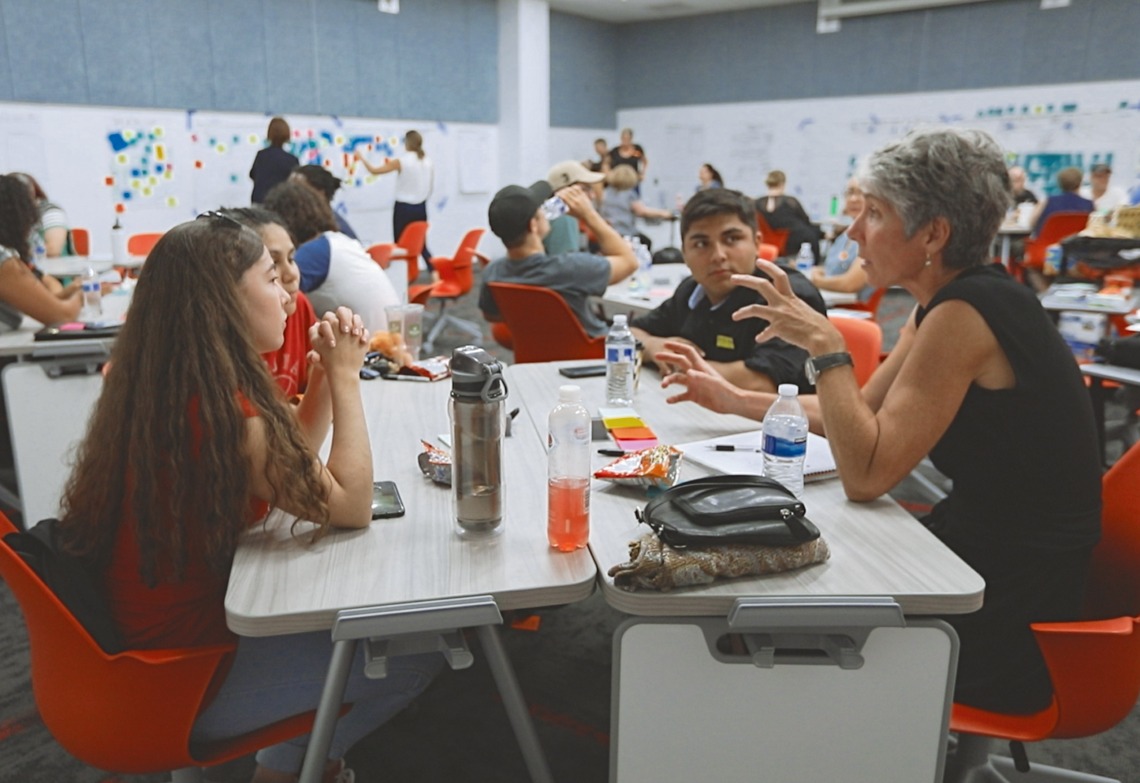Modernizing Student Digital Experiences
Chief Technology Officer shares the development and future of the University digital landscape for students and employees

On December 7, participants gathered during their lunchtime for Modernizing the Student Digital Experience, a virtual webinar highlighting the advancements made on this front in the last three years.
As part of the University’s strategic plan, collaborators across student service organizations—including those from UITS, Trellis, and UAccess Student—have steadily been enhancing the digital services students use to interact with the University. Last week’s hour-long event was hosted by Darcy Van Patten, Chief Technology Officer, and Alex Underwood, the University’s Registrar, who reflected on the journey to ameliorate the online student services.
The webinar was kicked off by Van Patten, who explained the initial core strategies that define the modernization project. Addressing the whole student—not just the academic learner—has been a central tenet for unifying the work across multiple teams. From there, the teams have built systems based around the student experience—looking at the technology students use along with the quality and cohesiveness of their total experience.
“Understanding through their lens of how they navigate the University and how to make that easier, is an important strategy that we’ve taken through all of this,” suggested Van Patten during the presentation. “We learned early on that what we think students need and want is not entirely what they understand their experience to be." Gathering student input included surveys, journey mapping sessions and focus groups.
Along with the Trellis team, the Office of the Registrar is currently working on projects to improve their online infrastructure. Alex Underwood took the stage to explain their initiatives, the first of which merges the current academic catalog with the public display of program requirements. The Registrar’s new mobile-friendly and consistent experience is a substantial project that will put the student and the ease of finding academic policies and curricula center stage.
Another program close to Underwood's heart is SURPASS eForms. The new eForms capability improves online service for all students, streamlines form approval processes, and reduces staff time advising on how to navigate disparate form-handling procedures. Currently, there are more than 80 different forms outside of UAccess Student that the Registrar supports. The new SURPASS eForms was an opportunity to improve and simplify the forms process.
"There's a whole host of differing technologies that we're asking students to navigate to be able to manage their academic record," said Underwood. "We're really looking for a common platform to modernize these experiences for students. It's aligned to the rest of the fabulous work that has been done in modernizing the student digital experience."
Van Patten added that reducing the number of platforms in instruction would also help students. She hopes to encourage faculty to use the enterprise learning systems that students are more familiar with and can more easily find support for. These systems are also integrated into the tools the Trellis team is developing, such as CatCloud automatically pulling syllabus information from D2L.
The discussion then touched on the future projects in the works. Coming out this month is a new proxy capability within UAccess Student, that will allow advisors, the registrar, or anyone with the right role to proxy a student and see what a particular student sees within the platform. The Trellis team is currently working on co-curricular planning, a tool that enables flexible planning for co-curricular and non-academic activities which is due to arrive at the end of 2023.
The employee digital experience is also being addressed. Focus groups were held throughout the spring and summer to understand the employee perspective in making their online experience user-friendly and cohesive. Several priorities that have come from the focus groups include community and University-wide engagement, streamlining the onboarding process for new employees, and more efficient management of day-to-day interactions.
Much of the success of the new digital tools and experiences would not have been possible without the commitment of UITS and Trellis employees along with all the collaborators across campus. "I really can't say enough how much work it takes to get to this point," expressed Van Patten. "I am thankful for what we do to support students every day and to collaborate together on their behalf."
Watch a video recording of the full webinar for more insights on the development of the student digital experience in past three years.

